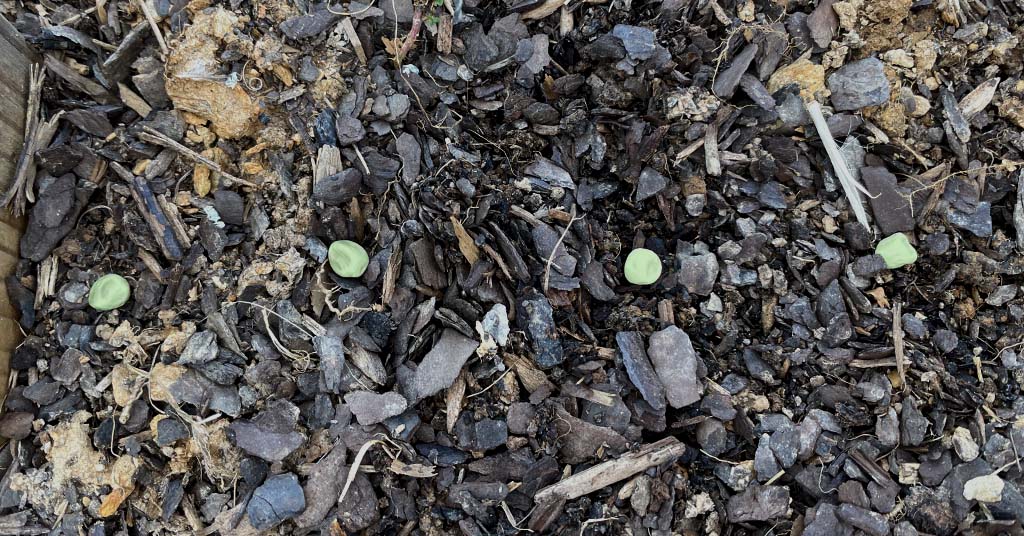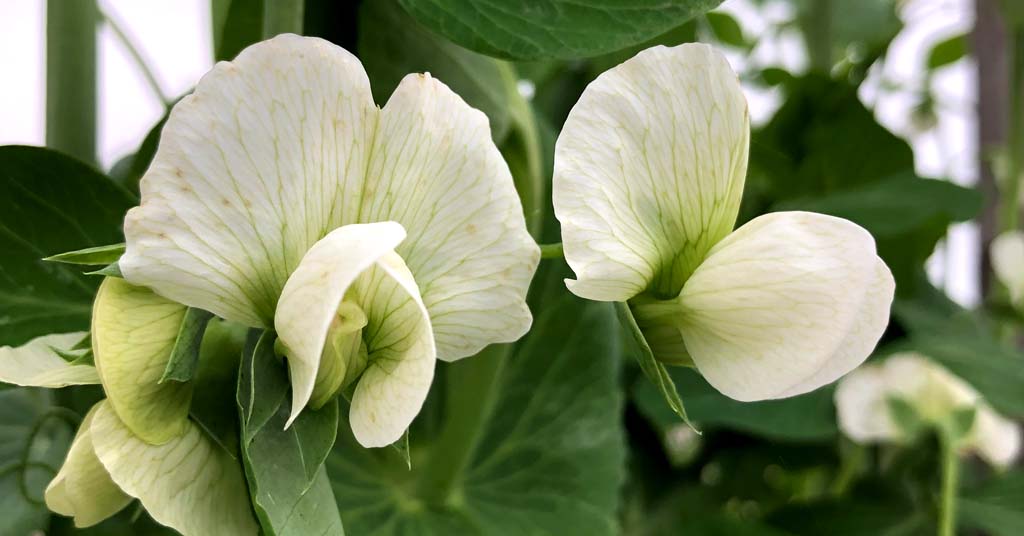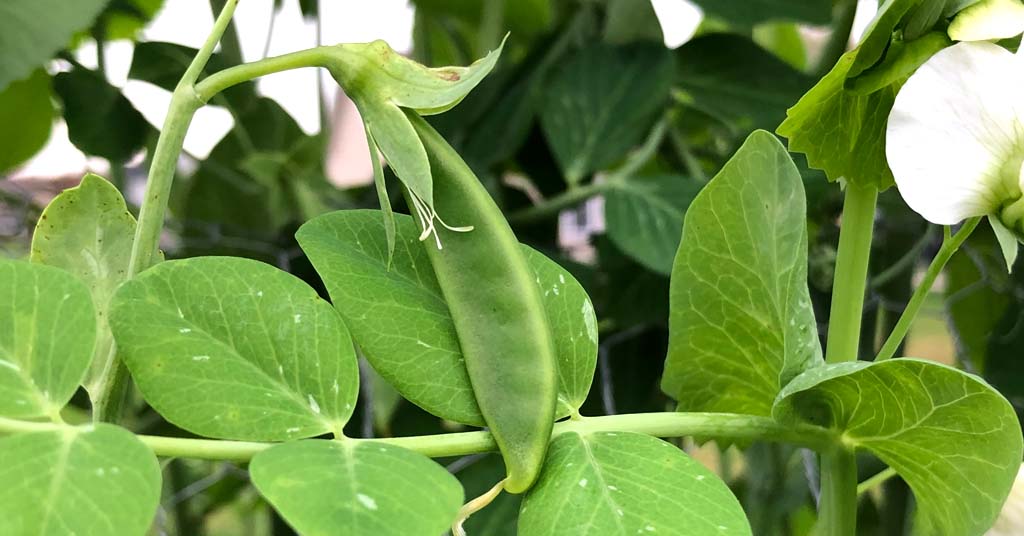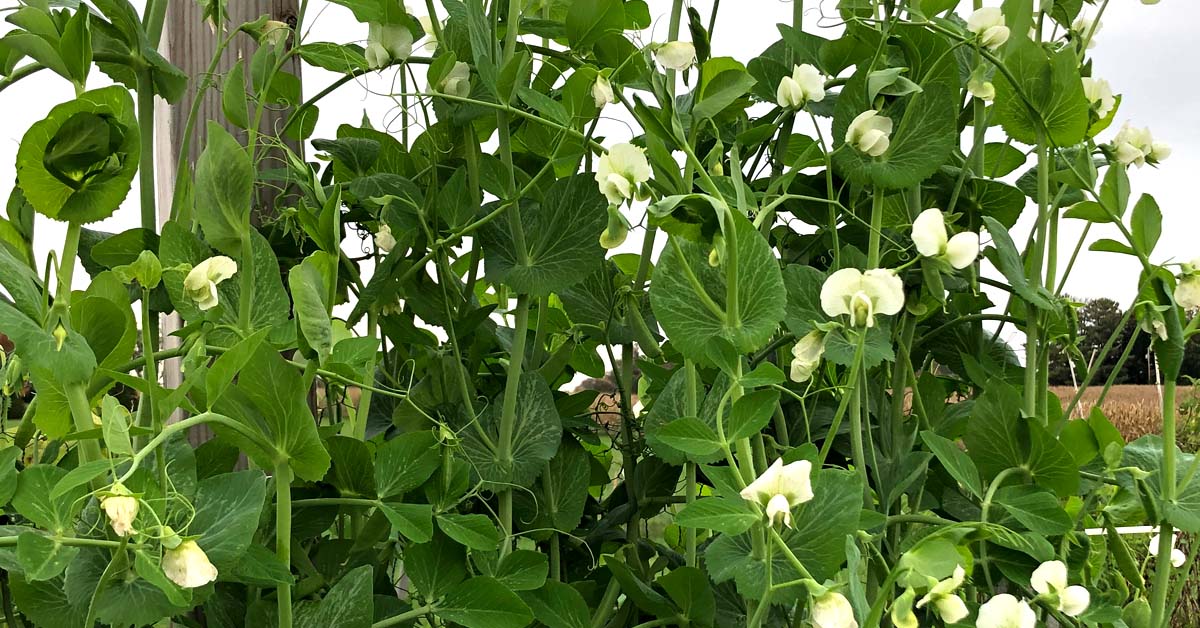This post may contain affiliate links. When you purchase through links on my site, I may earn a commission at no cost to you. See my Privacy Policy for details.
Sugar snap peas are one of the earliest plants you can grow in your garden. They are also one of the easiest plants for new gardeners to be successful with. With sugar snap peas you get to enjoy the entire pod and the peas inside, what a delicious treat. They are fantastic to snack on while working in the garden and if you are not careful the ones you pick may never make it into the house. I often find my son out in the garden “snacking” and he usually goes for the sugar snap peas first.
How to Plant Sugar Snap Peas
You can choose between bush varieties and climbing varieties of sugar snap peas. The bush varieties still can grow to about 3 feet tall so you should support them in some way or they will sprawl across the ground as they are growing. Climbing sugar snap peas plants grow to be about 6 to 8 feet tall so they would need to have some sort of trellis to grow up. The pea vines can grow up and twine around supports that are 1/4 inch thick. I typically build DIY trellises for them to grow up. I took 2 wooden posts and ran the chicken wire in between them attached with zip ties. Easy to move around the garden each season. I have also used a teepee trellis to grow my snap peas on.
Sugar Snap Pea Growing Conditions
Sugar snap peas will grow in full sun or partial shade so there are multiple options on where to place your snap pea plants. Peas are typically an early spring crop because they do not like the hot weather. Depending on your growing season, if it is not too hot in early fall you might also be able to fit in a fall crop of sugar snap peas. Sugar snap peas will slow their growth and production if temperatures are consistently above 70 degrees.
Plant your sugar snap peas as soon as the ground has thawed and after your last frost date in the spring. You can dust your sugar snap pea seeds with pea inoculant. Pea inoculant is a beneficial bacterium that can help pea plants grow more vigorously and increase pod production. Direct sow your seeds 1 inch deep and 2 inches apart if planting bush varieties or 4 inches apart if planting vining varieties. If growing bush varieties you can grow them in wide bands or blocks so that they support each other when growing. When growing vining varieties I usually grow wide rows on either side of my trellis so as they grow I can help attach them to the trellis with twine.
Once planted make sure the soil for the peas is consistently moist. Most varieties will sprout within 7 to 10 days of planting.

Sugar Snap Pea Care
Once your sugar snap peas have sprouted they typically need very little care. Make sure to water them to keep their soil evenly moist. I make sure to assist them, as they grow larger, to connect to the trellis I have set up for them. If the sugar snap pea vine needs additional assistance attaching to the trellis I can just take some garden twine and tie it horizontally from one end of the trellis to the other going around the pea vines so they are sandwiched between the twine and the trellis. When the vines are about 6 inches tall you can provide them with a top dressing of organic fertilizer or compost. You should mulch the bottom of your sugar snap pea plants to help keep the soil cool and moist. If you are planting in blocks or wide rows you might not need to mulch as the plants will shade the soil to keep it cool. Each flower that appears on your pea vine will turn into a sugar snap pea pod.

How to Harvest Sugar Snap Peas
Sugar snap peas are extremely easy to harvest from your garden. Sugar snap peas should be ready to harvest about 6 to 8 weeks after planting. Peas grow from the bottom of the plant to the top so look for pea pods first near the bottom of the plant. Older pea pods will be closer to the bottom of the plant. Inspect your sugar snap peas, the pea pods should be full of round peas and the outside of the pod should be smooth. Grasp the pea pod with one hand and where it connects to the pea vine in the other hand. Gently pull the pea pod off the pea vine. You can also utilize kitchen scissors/shears or pruning shears to cut the pea pods from the vines. Some varieties of sugar snap peas may have a string that runs along the edge of the pea pod. You should remove this tough fibrous string before eating the pods. Make sure to harvest pea pods regularly this will encourage your plants to put their energy into producing more flowers and sugar snap pea pods.
Once harvested sugar snap peas start to lose their sweetness and begin to become starchy. Pick your snap peas right before you are going to use them if you can for their best taste. If you harvest early try to refrigerate or freeze as soon as possible to keep them fresh. We love eating snap peas fresh, put in salads, and even stir-fried for dinner.

Pests and Diseases
I have luckily never had any pests or diseases that have affected my snap peas. Some could cause some issues but I have not encountered them in my garden.
Pea aphids can suck juice from the plants. They can also spread mosaic disease, which will make the plants yellow and stunted. The aphids are easily removed by hosing them off with water. You can also encounter pea weevils which can burrow into the snap peas. Dusting your snap pea plants with lime can help.
Avoid overhead watering if your snap peas are prone to mildew. Try to water near the base of the plants. Snap pea plants are also susceptible to root rot which can cause the leaves to turn yellow and the stems to rot. Fusarium wilt can destroy the leaves of your plants and stunt the growth of the snap pea plants. If you practice plant rotation root rot and fusarium wilt can usually be avoided.
Sugar Snap Peas
Sugar snap peas will be included in my garden every year. My entire family loves to eat them so they are a staple crop in our house. They are really easy to grow and I do not encounter any pests or diseases with them each year. If you have not given sugar snap peas a try in your garden yet, you should try them this year. Happy growing!
Additional Vegetable Gardening suggestions:


